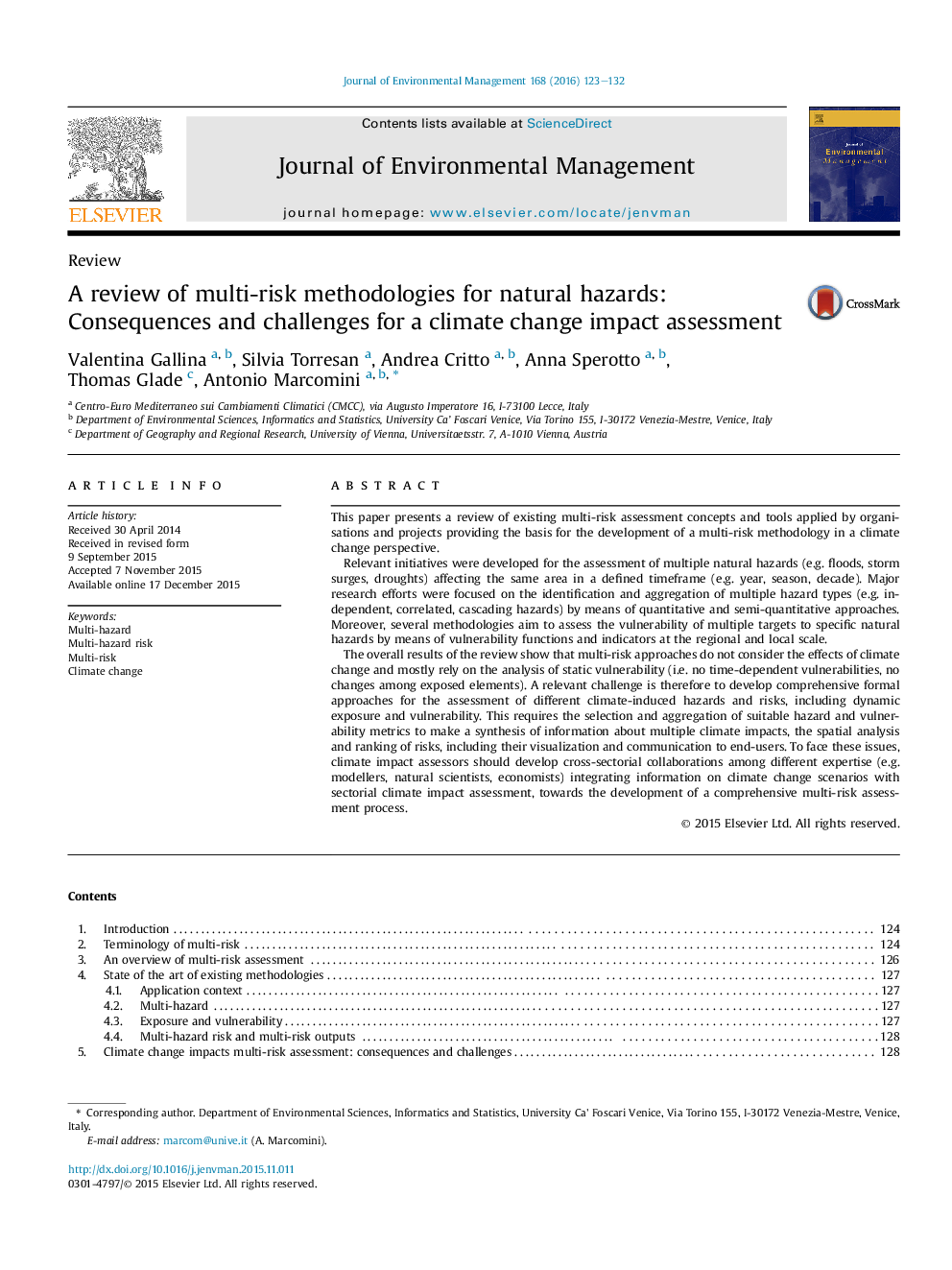| Article ID | Journal | Published Year | Pages | File Type |
|---|---|---|---|---|
| 1055551 | Journal of Environmental Management | 2016 | 10 Pages |
•Key definitions of multi-hazard, multi-hazard risk and multi-risk are explored.•Relevant organizations, tools, projects and methodologies are critically reviewed.•Gaps and challenges toward the development of a multi-risk assessment for climate change impacts are discussed.
This paper presents a review of existing multi-risk assessment concepts and tools applied by organisations and projects providing the basis for the development of a multi-risk methodology in a climate change perspective.Relevant initiatives were developed for the assessment of multiple natural hazards (e.g. floods, storm surges, droughts) affecting the same area in a defined timeframe (e.g. year, season, decade). Major research efforts were focused on the identification and aggregation of multiple hazard types (e.g. independent, correlated, cascading hazards) by means of quantitative and semi-quantitative approaches. Moreover, several methodologies aim to assess the vulnerability of multiple targets to specific natural hazards by means of vulnerability functions and indicators at the regional and local scale.The overall results of the review show that multi-risk approaches do not consider the effects of climate change and mostly rely on the analysis of static vulnerability (i.e. no time-dependent vulnerabilities, no changes among exposed elements). A relevant challenge is therefore to develop comprehensive formal approaches for the assessment of different climate-induced hazards and risks, including dynamic exposure and vulnerability. This requires the selection and aggregation of suitable hazard and vulnerability metrics to make a synthesis of information about multiple climate impacts, the spatial analysis and ranking of risks, including their visualization and communication to end-users. To face these issues, climate impact assessors should develop cross-sectorial collaborations among different expertise (e.g. modellers, natural scientists, economists) integrating information on climate change scenarios with sectorial climate impact assessment, towards the development of a comprehensive multi-risk assessment process.
